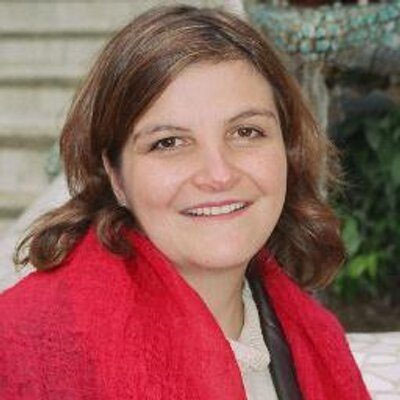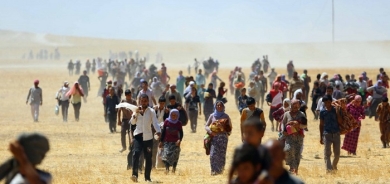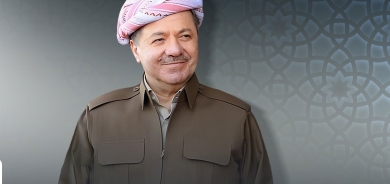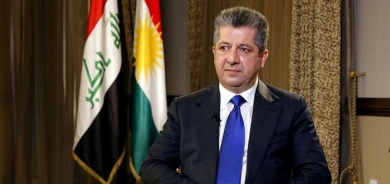A NEW KURDISH SPRING

In the midst of all the changes the Arab Spring has brought to Egypt, Tunisia, and Libya, among others, the intelligent lay, media, and policy worlds have paid much less attention to what might be called the Kurdish Spring: Sudden demands by the Kurds for true democracy including cultural, social, and political rights and their immediate implementation before the window of opportunity closes. Or as Ofra Bengio recently described the resulting situation: “Alongside the tectonic sociopolitical changes taking place in the region as a whole . . . the borders separating the Kurds of Iraq, Turkey, Syria and Iran no longer appear as sacred or secure as they once did. Thus, the Kurdish Spring refers to the sudden empowerment of the Kurds after being for so long mere victims whose only friends were the mountains and the Kurdish challenge to the existing borders established by the Sykes-Picot Agreement after World War I.
However, before surveying this new climate, it also should be noted that the Kurdish version of the Arab Spring did not just begin in late 2010 and early 2011, but in some ways has been going on for decades: In Turkey (at least since the Kurdistan Workers Party (PKK) formally began its insurgency in August 1984), as well as in Iraq since the days of Mulla Mustafa Barzani beginning in the early 1960s, but especially since the end of the two U.S. wars against Saddam Hussein in 1991 and even more in 2003.
These two wars led to the creation of the Kurdistan Regional Government (KRG) in northern Iraq, the most successful attempt at Kurdish statehood in modern times. As of 2013, the KRG has become virtually independent possessing its own government, army, thriving economy, and flag. The KRG also issues visas for foreign visitors. Baghdad’s troops to the south are not even allowed to enter into the territory of the KRG! With its new found allies the United States and Turkey, the KRG belies the old adage that the Kurds have no friends but the mountains.
On a lesser scale Iran too has long been going through its own off again/on again Kurdish Spring, the Mahabad Republic in 1946 being the most famous example. Even the then little-heard-from Syrian Kurds experienced violent protests in March 2004 when rioting broke out at a football match in Qamishli, inspired in part by the Kurdish successes in neighboring Iraq.
Thus, to speak of a Kurdish Spring may artificially isolate these earlier events from what began shortly after the Arab Spring commenced in late 2010 and early 2011. Kurdish Uprisings might be a better term. In addition, the term Kurdish Spring might ignore the contagion or outsider effect on what is occurring. Nevertheless, the term Kurdish Spring does suggest how these recent events are a sudden awakening calling for change.
Returning to Iran then, one should note that until recently, the Iranian Kurds were bitterly divided into several competing parties, constant protests, and, in the case of the Kurdistan Free Life Party (PJAK) ensconced in the Iraqi Kandil Mountains just across the border from Iran, even armed struggle against the Iranian regime. In the past year, however, a more-or-less cease-fire has fallen over the Iranian Kurds and little has been heard from them. During 2012, the long-divided Iranian Kurds have also begun to achieve more unity. Some speculate that this might be the prelude to the next explosive blooming of the Kurdish Spring.
Turkey, where slightly more than half the Kurds in the world live, has also seen tectonic changes regarding its former attitude that there were no Kurds in that country, only “Mountain Turks” who had forgotten how to speak Turkish. Largely as a result of Turkey’s democratic reforms necessitated by its hopes for accession to the European Union (EU), Turkey has proclaimed a Kurdish Opening that has now led to peace talks between the state and the Kurdistan Workers Party (PKK). In addition, the ruling Justice and Development Party (AKP) of Prime Minister Recip Tayyip Erdogan is involving the legal Kurdish nationalist Peace and Democracy Party (BDP) in the task of writing a new, democratic Constitution for Turkey to displace the one handed down by the military in 1982. Among many other proposals, this new Constitution will replace ethnic Turkish citizenship with a civic citizenship that recognizes the Kurdish existence and its democratic rights to mother-tongue education as well as some form of meaningful autonomy that will alleviate inefficiencies caused by Turkey’s over-centralized state while also satisfying Kurdish demands for some meaningful local governance.
Finally, in Syria, where the Kurdish population is much smaller and not as geographically united as it is in the other three states, the Kurds—in part inspired by the rise of the KRG—have suddenly broken out of their muted and divided existence to partially join the anti-Assad movement: First in protest against the assassination on October 7, 2011 of Mishaal Tammo, one of their most promising leaders, and subsequently as part of the much larger revolt against the Assad regime. Although the Syrian Kurds have taken a less active role against Assad than other Syrian dissidents, since July 2012, they have enjoyed de facto autonomy due to Assad’s tactical withdrawal from the Kurdish northeast of the country.
Conclusion
Second only to the perennial Arab-Israeli dispute, Kurdish nationalism remains a continuing and leading factor of instability in the geostrategically important Middle East. Furthermore, since the Kurds sit on a great deal of the Middle East’s oil and possibly even more important water resources, Kurdish nationalism probably will become increasingly more salient in the coming years. The Kurdish Spring that has followed in tandem with the Arab Spring since 2011 clearly illustrates the truth of this situation.
Unlike the Arab-Israeli dispute, however, the Kurdish issue no longer seems intractable as the Kurds have actually established an autonomous state in northern Iraq, the KRG. Containing enough oil reserves to make it the sixth largest oil producer in the world if it were to become independent, the KRG represents the Kurds’ closest achievement of statehood in modern times. Given continuing U.S. diplomatic backing as well as wise KRG leadership, it is likely that the KRG will be able to survive and even prosper amidst all the birth pangs of the new democratic Iraq.
The situation for Kurdish nationalism in Turkey, of course, is more uncertain. However, a quick comparison with where the Kurdish issue stood in Turkey just one or two decades ago when the very term Kurd constituted a four-letter word in the Turkish lexicon will illustrate the enormous progress that has been made. The immediate task is for the fighting to stop and the writing of a new, more democratic constitution to commence. Both sides are on record as favoring just such a scenario, so the burden is on them now to produce. Given the progress that has been made over the past two decades and especially since the formal peace process began in Janurary 2013, there is reason to be cautiously optimistic.
Syria presents a totally new and most important situation for the Kurds given their sudden involvement in the uprising against the Assad regime that has been continuing since March 2011. From being nothing more than a mere afterthought, the Kurdish movement in Syria has suddenly taken on a crucial role that not only impacts the future of Syria, but regional relations involving Turkey, Iraq, and Iran, among others.
This leaves Iran as being so far the odd man out of the Kurdish Spring. Of course, this is only a relative statement. In June 2012, for example, U.S. assistant secretary of state for democracy, human rights, and labor Michael Posner denounced continuing negative trends in Iran towards its Kurdish population: “Intolerance, of dissent . . . ; free speech restricted; internet freedom restricted; political participation severely circumscribed; unfair trials; amputations; floggings; lots of death penalty. . . . So it is a very grim picture.” The Kurdistan Democratic Party of Iran (KDPI) and Komala, once bitter enemies, reached a strategic agreement in August 2012 calling for federalism in Iran to undo the national oppression suffered by the Kurds. In addition, the divided KDPI began reunification talks in December 2012. Since Iran also contains the second largest Kurdish population in the Middle East, as already noted, the long-festering Kurdish unrest there clearly has the potential to burst forth suddenly as part of the Kurdish Spring.
1 Ofra Bengio, “Kurdistan Reaches toward the Sea,” Haaretz (Jerusalem), August 3, 2012. Http://www.mesop.de/2012/08/03/kurdistan-reaches-toward-the-sea, accessed August 8, 2012.
2 “Exorbitant Human Rights Violations in Iran,” Voice of America, June 8, 2012. Http://www.mesop.de/2012/06/08/exorbitant . . . , accessed June 8, 2012.

 Michael Gunter
Michael Gunter






